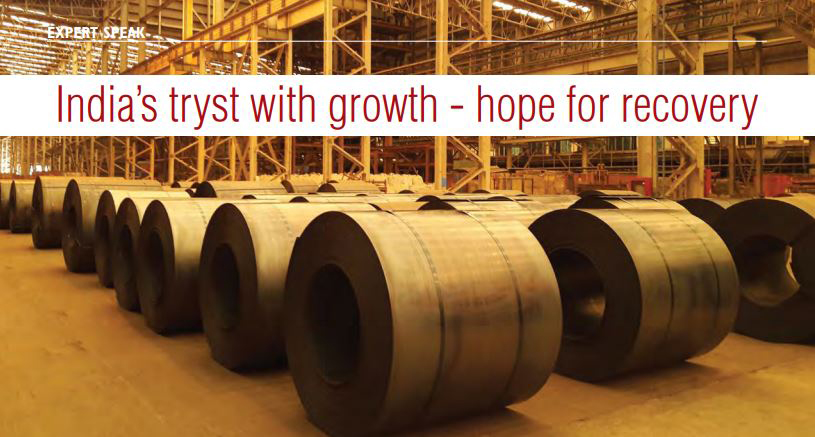India’s tryst with growth - hope for recovery

India’s tryst with growth - hope for recovery
Indias GDP grew 5-8 percent year-on-year in the first quarter of 2019 slowing down to 5 percent in the June quarter a five-year low. Amidst the high-risk environment of revving de-globalization and raging trade wars India needs to stir investor confidence and tap into its pool of private players. Indias dampened growth can be attributed to dented growth in agriculture and manufacturing weakened consumer expenditure and a somber investment scenario that demands resurgence. An economy that is fueled by the dual engines of private consumption and government spending calls for a fresh set of reforms to spur risk capital that will galvanize India s growth. In essence, a far cry for rallying consumer demand and incentivizing risk capital coupled with ongoing public expenditure in infrastructure foremost the iron and steel industry.
The backbone of the Indian industrial scenario - provide major raw materials for at least nine other major industries including automobiles automobile components construction defense manufacturing electrical machinery railways renewable thermal power and oil and gas. A stimulus to the manufacturing sector such as that exemplified by the Odisha Model alongside a strong governmental emphasis on supporting ancillary units would have a much-required multiplier effect on job creation in ancillary industries. Second, a crucial turning point for India also necessitates power sector reforms In November 2015 the government launched the Ujwal DISCOM Assurance Yojana UDAY to recover debt-laden power distribution companies thereafter in September 2017 the government s Saubhagya initiative sought to provide households across the country with electricity connections 24X7. Power for All Given peak power demand is estimated to reach 300 GW by 2026-27.
Increased demand translates into increased investments of approximately INR 30 trillion over the next decade. Additionally, the second leg of government initiatives has been drafted to foster systemic change in the power sector. However, the true potential of these schemes will only be realized when integrated with structural changes as proposed by Power Minister R K Singh including features such as system strengthening expansion of access loss reduction and rewarding states that meet financial prudence targets with additional funds. Indeed the revival of India s power sector is a piped dream that needs to be converted into a reality for India to emerge as a global superpower. Lastly accurately suggested by the Confederation of Indian Industry is a revamp of the banking sector to ensure that capital is available for capacity creation including unlocking capital stuck in delayed projects or arbitration. Importantly a fair legal framework that differentiates between business outcomes and fraudulent practices would largely incentivize risk capital and infuse consumer sentiment and belief in nation-building.
All with the aim of boosting the government Make in India campaign. Along with celebrating India s improved ranking of 77 out of 190 countries in the ease of doing business index up 23 spots from last year comes the additional responsibility of implementing tax initiatives and sectoral reforms that will attract global capital investments and spur the dual goals of accelerated growth and increased employment in India.